The Impact of UV Light on Insect Biology and Control
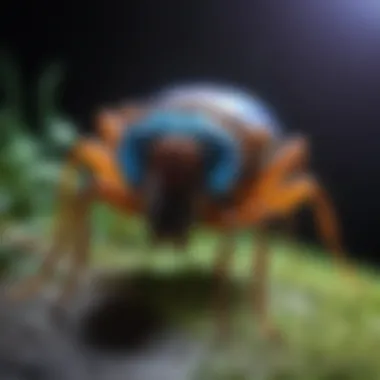
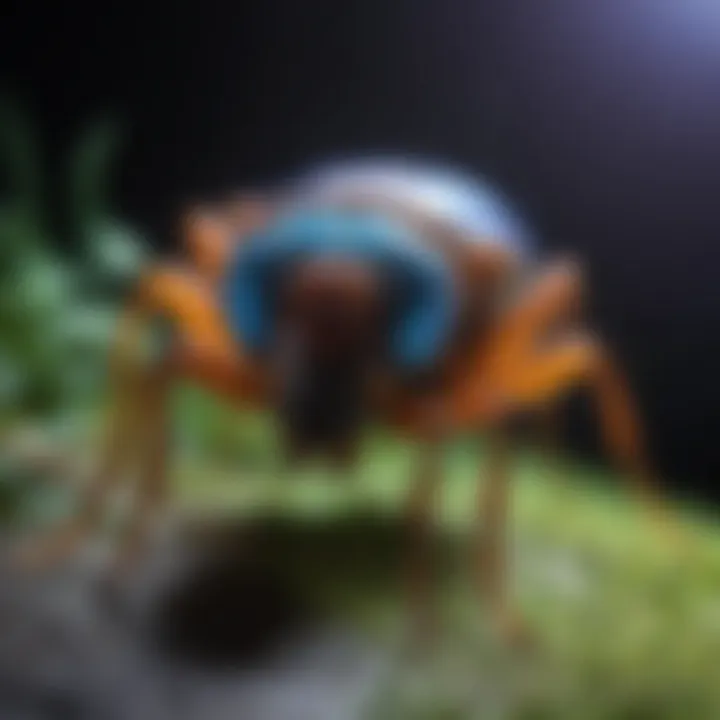
Article Overview
Purpose of the Article
This article aims to examine the intricate relationship between ultraviolet (UV) light and its effects on insect biology. Understanding this connection is essential not only for comprehending insect behavior but also for utilizing UV light in pest control strategies. This research will cover the biological implications of UV light and its potential to enhance agricultural practices. The exploration of these dimensions will facilitate better pest management while addressing ecological balance.
Relevance to Multiple Disciplines
The significance of UV light in insect studies transcends various fields. Ecology, entomology, agriculture, and pest management all intersect in this context. Researchers from these backgrounds can gain key insights into how UV light influences insect interactions within their ecosystems. This understanding can drive innovation in pest control methods, integrating scientific principles with practical applications. It is crucial for professionals in these fields to appreciate the multi-faceted roles of UV light.
Research Background
Historical Context
The exploration into UV light's role in insect biology is not entirely novel. Historical research has revealed several ways that UV light affects living organisms. Insects, many of which have evolved unique sensory adaptations, respond to UV light in specific ways. Prior studies have indicated that many pollinators, like bees, can detect UV wavelengths, which assist them in locating nectar-rich flowers. Over time, scientists have deepened their inquiry into how UV radiation influences both the physiology and behaviors of insects.
Key Concepts and Definitions
Fueling this discussion is an understanding of several key concepts:
- Ultraviolet (UV) Light: This part of the electromagnetic spectrum falls between visible light and X-rays. It is divided into three categories based on wavelength: UVA, UVB, and UVC. Each has distinct effects on living organisms.
- Photoreception: This process involves how insects perceive light. It is critical for their navigation, mating rituals, and predation.
- Pheromones: Many insects use chemical signals to communicate, which can be affected by light conditions. Understanding how UV light influences these signals is essential.
This synthesis of historical context and key concepts will provide a firm foundation for exploring the later sections of this article. Furthermore, insights from existing literature will inform future research directions.
"A better understanding of the interactions between UV light and insects can lead to advancements in pest control technologies and practices."
"A better understanding of the interactions between UV light and insects can lead to advancements in pest control technologies and practices."
Overall, the relationship between UV light and insect biology is rich and complex. As we move forward, the implications for pest control and agricultural practices will become more apparent.
Preamble to Ultraviolet Light
Ultraviolet light, a segment of the electromagnetic spectrum, holds significant relevance in both biology and pest control. Understanding this type of light is essential, as it affects various biological processes, particularly in insects. Furthermore, the implications of UV light reach into ecological assessments, pest management strategies, and even agricultural practices. By gaining insights into the characteristics and effects of ultraviolet light, researchers and practitioners can innovate new methods for managing insect populations, leading to more sustainable practices in agriculture.
Definition of Ultraviolet Light
Ultraviolet light is defined as electromagnetic radiation with a wavelength shorter than that of visible light but longer than X-rays, typically ranging from 10 nm to 400 nm. It is divided into three main categories based on their wavelength: UVA, UVB, and UVC. Each type has distinct interactions with biological materials, influencing both physiological and behavioral aspects of insects. Knowledge of these characteristics is essential as it allows for understanding how UV light can be harnessed for various applications.
Types of UV Light
Ultraviolet light can be categorized into three primary types, each playing a different role in insect biology and its management.
UVA
UVA occupies the range from 320 nm to 400 nm. One of its most notable characteristics is its ability to penetrate deep into biological tissues. This feature makes UVA essential for studying insect behavior, as many insects rely on this light for vision and navigation. The beneficial aspect of UVA is its relatively low energy compared to other UV types, which allows it to cause less direct damage to DNA. However, it can still have significant effects on the behavioral aspects of insects, influencing mating rituals and foraging behaviors.
UVB
UVB has a wavelength range of 280 nm to 320 nm. This type of UV light is known for its higher energy compared to UVA. One of its primary contributions is the synthesis of vitamin D in various organisms, including insects, which is vital for their metabolism. The key characteristic of UVB is its capacity to cause direct DNA damage, resulting in mutations that can influence insect development and reproduction. While UVB can provide benefits, its potential harmful effects on insects make it a double-edged sword in managing populations.
UVC
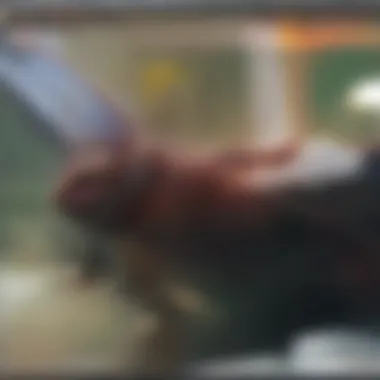
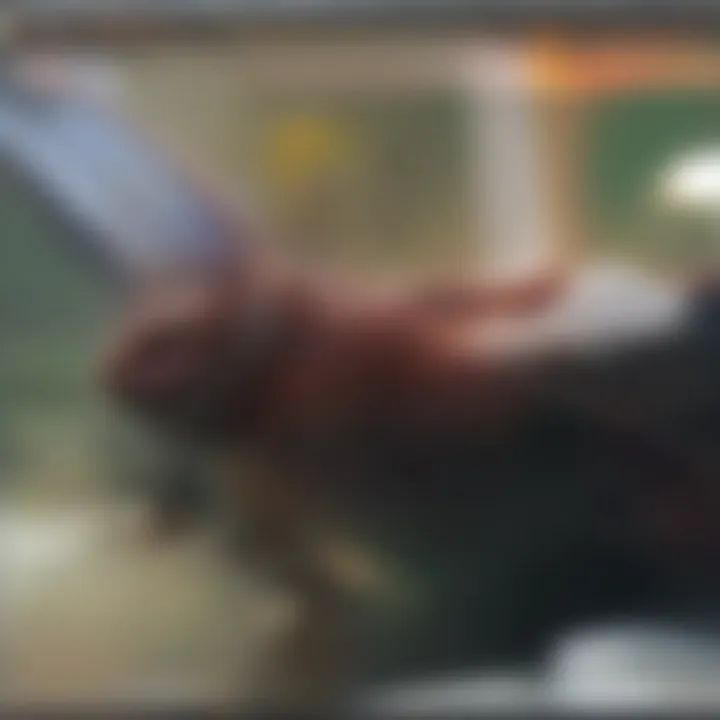
UVC ranges from 100 nm to 280 nm. It is the most energetic form of UV radiation and is typically absorbed by the Earth's ozone layer, making it less prevalent at the surface level. UVC is frequently utilized in disinfection processes due to its ability to destroy various pathogens. Its unique feature lies in its high lethality for many microorganisms, including pest insects. However, its application in pest control requires careful consideration due to potential adverse effects on non-target species and the environment. The integration of UVC in pest management strategies can offer significant advantages, but must be approached with caution.
Fundamentals of Insect Biology
Understanding the fundamentals of insect biology is critical when discussing the role of UV light in insect behavior and ecology. Insects are among the most diverse and abundant organisms on Earth, playing essential roles in many ecosystems. Their biology is complex, influenced by numerous environmental factors. Among these factors, ultraviolet light markedly affects their physiology and behavior.
The structure and physiology of insects dictate how they interact with their environment and respond to external stimuli such as UV light. Factors like their sensory systems, exoskeleton composition, and metabolic processes all contribute to their overall biology. These aspects lay the groundwork for understanding how UV light impacts them, especially in terms of behavioral changes and physiological responses.
Insect Structure and Physiology
Insects possess a hard exoskeleton made of chitin, which provides protection and supports their body structure. This exoskeleton plays a role in how UV light penetrates and affects them. Additionally, their compound eyes are specially adapted to detect UV wavelengths. This unique adaptation allows insects to perceive their environment differently than humans do.
The physiology of insects varies significantly across species, influencing their responses to UV light. For instance, some insects utilize UV light for navigation, while others use it as a cue for mating behaviors. Understanding these physiological traits is essential to comprehend how UV light interacts with insects and alters their behavior.
Reproductive Strategies
Insects exhibit a remarkable diversity of reproductive strategies, which is crucial to their survival and adaptation. Some species reproduce quickly, while others engage in more extended periods of courtship. UV light potentially plays a role in these strategies as well. For example, many insects rely on visual signals, which may include UV light patterns, during mating rituals.
The influence of UV light on reproduction can affect population dynamics and ecosystem structure. Moreover, UV light can influence the timing of reproduction, aligning with seasonal changes. Understanding these reproductive strategies within the context of UV light is paramount for grasping the broader ecological implications of insect biology.
Insect biology encompasses structural, physiological, and reproductive features essential for comprehending UV light's broader impact on species and ecosystems.
Insect biology encompasses structural, physiological, and reproductive features essential for comprehending UV light's broader impact on species and ecosystems.
The study of insect biology provides insights into their ecological roles. This knowledge is vital for implementing effective pest management strategies that harness UV light technologies. By understanding insects’ biological foundations, researchers and practitioners can better address challenges in agriculture and conservation linked to pest species and their environmental interactions.
The Biological Effects of UV Light on Insects
Understanding the biological effects of UV light on insects is crucial in comprehending broader ecological and agricultural systems. Insects, as a diverse and integral part of many ecosystems, respond distinctly to ultraviolet light in various ways. These responses can have significant implications for their survival, behavior, and roles in population dynamics. By analyzing these effects, researchers can develop more effective pest control strategies and assess the potential benefits and risks of UV exposure.
Behavioral Changes Induced by UV Light
Behavioral alterations in insects due to UV light can manifest in numerous ways. For instance, some studies indicate that UV light can affect foraging patterns and reproductive behaviors. Insects are often attracted to UV light, which plays a role in their navigation and mating rituals. This attraction can be harnessed in pest control efforts or may inadvertently impact non-target species.
Moreover, UV light can also alter circadian rhythms in certain insect species. These shifts can influence daily activities, such as feeding and resting, potentially disrupting their life cycles. This disruption can lead to decreased mating opportunities or altered predator-prey interactions, affecting population dynamics.
It's important to consider that not all insects respond positively or similarly to UV exposure. Some may avoid areas with intense UV light due to its damaging effects, while others may thrive in these environments, leading to uneven population distributions.
Physiological Responses to UV Exposure
Physiologically, UV light can cause both beneficial and harmful changes in insects. Exposure to UV radiation can lead to increased synthesis of protective pigments, aiding in UV defense mechanisms. Certain insects, such as some species of beetles and moths, exhibit increased melanin production or other adaptations which help mitigate the harmful effects of UV radiation.
However, the negative physiological impacts cannot be overlooked. UV radiation can damage DNA, leading to mutations and increased mortality in insect populations. Additionally, prolonged exposure may weaken the immune systems of these organisms, making them more susceptible to diseases and parasites compared to their non-exposed counterparts.
It is crucial to research these physiological responses thoroughly. Understanding the balance between harm and adaptation will be key in predicting how insect populations may evolve with ongoing environmental changes involving UV radiation.
Ecological Implications of UV Light in Insect Populations
The ecological implications of UV light in insect populations are multifaceted and crucial for understanding broader ecological systems. UV light plays a significant role in shaping insect behavior, physiology, and ultimately, their populations. As we explore this topic, we uncover the intricate balance that exists between insects and their environments.
Role of UV Light in Insect Ecology
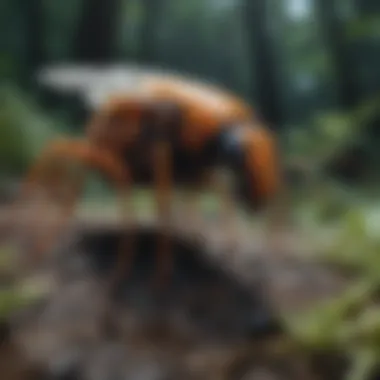
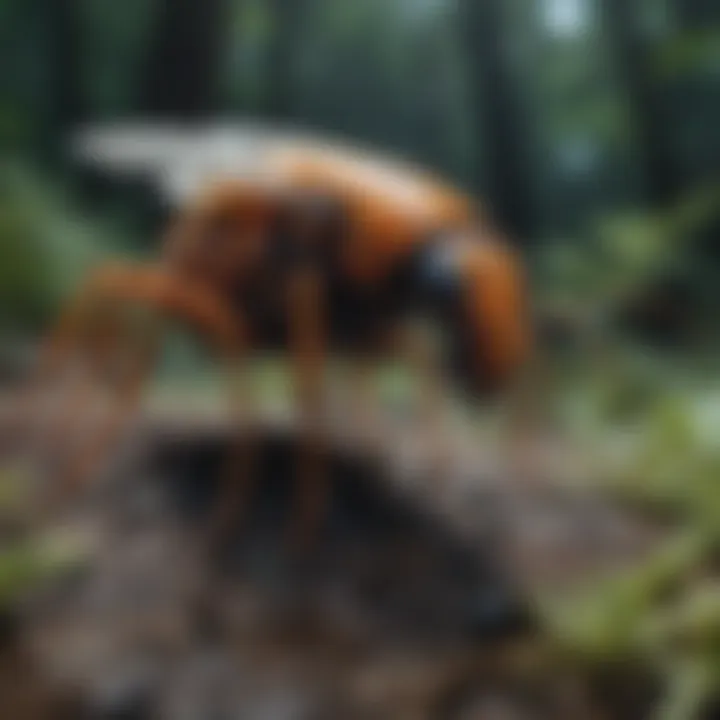
UV light affects various aspects of insect ecology. Insects rely heavily on light for navigation, mating, and foraging. Many species have evolved to have specialized photoreceptors that are sensitive to ultraviolet wavelengths. This adaptation allows them to better exploit their environment. For example, certain butterflies can see UV patterns on flowers, enabling them to locate nectar sources more efficiently.
Moreover, UV light influences insect activity patterns. Many nocturnal insects are attracted to UV light sources, which can lead to a concentration of these insects in those areas. This behavior can have significant ecological repercussions, including altered predator-prey relationships and competition among various species for resources. The impact of UV light on insect behavior, therefore, extends beyond individual insects to affect the broader ecosystem dynamics.
Effects on Ecosystem Dynamics
The effects of UV light on ecosystem dynamics are critical. Insects serve as essential components of food webs, acting as both prey and predators. Changes in insect populations, driven by UV light exposure, can lead to cascading effects within ecosystems. Here are several considerations related to this issue:
- Food Web Interactions: Any change in insect behavior due to UV light could shift the dynamics between predators and their prey. For instance, if UV variations impact the foraging success of certain insects, it might lead to an overpopulation or decline of these species, ultimately affecting their predators.
- Pollination: UV light plays a central role in the pollination of many flowering plants. If insect populations change due to altered UV exposure, it can influence plant reproduction and growth. This is particularly relevant in agricultural contexts where crop yield is dependent on effective pollination.
- Biological Control: Some pest management strategies utilize UV light to manipulate insect behavior. However, these strategies can have unintended consequences, potentially affecting non-target insect species, disrupting ecological balance.
Ultimately, the implications of UV light on insect populations go beyond mere survival. They touch upon the very fabric of ecological interactions that sustain biodiversity and ecosystem health.
Ultimately, the implications of UV light on insect populations go beyond mere survival. They touch upon the very fabric of ecological interactions that sustain biodiversity and ecosystem health.
As we continue our investigation into UV light's impact on insect populations, understanding its implications leads us to appreciate the complexity of nature and the delicate interrelationships among its inhabitants.
Applications of UV Light in Pest Management
The use of ultraviolet (UV) light in pest management presents notable strategies that resonate well within agricultural and ecological frameworks. UV light applications not only signify a shift towards innovative pest control but also emphasize integrating ecological principles within modern agricultural practices. This section explores UV light traps and integrated pest management strategies, highlighting their relevance in enhancing pest control methodologies.
UV Light Traps
UV light traps have gained traction as an effective means to attract and capture pests. These traps typically emit UV radiation, which is alluring to many insects, particularly nocturnal species, because they are attracted to light. Once drawn to the trap, the insects are often incapacitated through various mechanisms, such as electric grids or sticky surfaces.
The benefits of UV light traps are manifold:
- Species Selectivity: These traps can target specific pest species, reducing population numbers without impacting non-target insects significantly.
- Sustainability: They offer an environmentally friendly pest control option, minimizing reliance on chemical pesticides.
- Monitoring Tool: UV traps can serve as monitoring devices, providing insight into pest populations and informing management decisions.
However, considerations must be taken into account when implementing UV light traps. For instance, these traps may inadvertently attract beneficial insects, potentially leading to ecological imbalance. Furthermore, their effectiveness can vary depending on environmental conditions, such as background light, which can influence insect behavior. Ensuring placements are strategically chosen can help mitigate such issues.
Integrated Pest Management Strategies
Integrated Pest Management (IPM) combines multiple control tactics with the goal of sustainable pest management. The incorporation of UV light into IPM frameworks exemplifies an advanced approach to pest control. This method considers the entire ecosystem, promoting pest mitigation through a variety of strategies, including biological control, habitat manipulation, and cultural practices.
The role of UV light in IPM strategies offers several advantages:
- Enhanced Effectiveness: When UV light traps are used in conjunction with other methods, such as biological controls, it can increase overall pest control effectiveness by reducing pest populations more rapidly.
- Targeted Interventions: IPM strategies using UV light allow for targeted interventions, reducing the necessity for broad-spectrum pesticides that can harm a wide range of organisms.
- Data-Driven Approaches: By employing UV light traps as part of IPM, farmers can utilize monitoring data to inform their pest management decisions, allowing for more adaptive and responsive practices based on real-time insect activity.
Nonetheless, successful implementation of UV light within IPM frameworks hinges on understanding the local pest dynamics and ecological conditions. It requires research and data analysis to fine-tune the applications of UV light in diverse environments. A balanced approach ensures that beneficial organisms are preserved while effectively managing pest populations.
In summary, applying UV light in pest management not only supports ecological balance but also showcases how innovative practices can pave the way for sustainable agriculture.
In summary, applying UV light in pest management not only supports ecological balance but also showcases how innovative practices can pave the way for sustainable agriculture.
Challenges and Limitations of UV Light in Agriculture
Ultraviolet light offers promising benefits for pest management and insect behavior studies. However, several challenges and limitations exist in its application within agriculture. Understanding these factors is essential for researchers and practitioners to optimize their methods and enhance crop yields while minimizing negative impacts.
Efficacy of UV Technologies
The effectiveness of ultraviolet technologies varies based on several factors, including the type of UV light used, the target pest species, and environmental conditions. Studies have shown that while UVC light can effectively kill some insect pests, its efficacy largely depends on exposure duration and intensity. High intensity is required to achieve significant mortality, but extended exposure can lead to diminishing returns due to insect adaptation and survival strategies. Moreover, UV light can degrade when passing through the atmosphere, limiting its practical use in open fields.
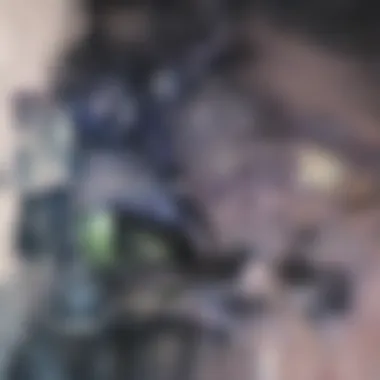
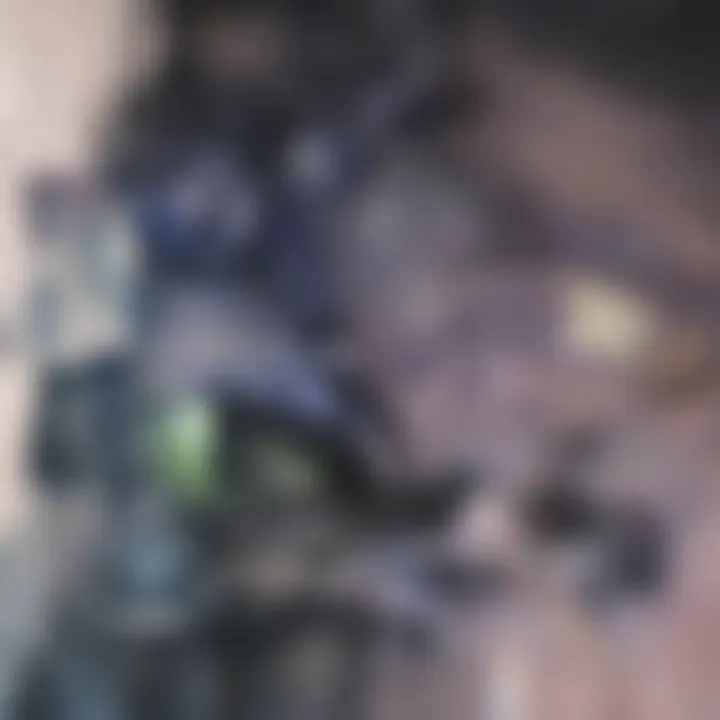
Research indicates that integrating UV light traps with other control methods can improve overall efficacy. For instance, combining UV light with biological controls can lead to better pest management results. However, the cost and complexity of these systems can be prohibitive for small-scale farmers, posing a significant challenge in widespread adoption.
Potential Adverse Effects on Non-target Species
One critical concern regarding the use of UV light in agriculture is its potential adverse effects on non-target species. While UV light targets specific insect pests, it may also inadvertently impact beneficial insects, such as pollinators and natural pest predators. The selective pressure applied to the ecosystem can lead to unintended consequences, destabilizing existing ecological balances.
T research emphasizes the importance of understanding the spectrum of UV light used—some wavelengths may attract beneficial insects while repelling pests. Evaluating these interactions is crucial to minimize harm to non-target species.
Future Directions in Research on UV Light and Insects
The field of entomology is rapidly evolving, especially in understanding the role of ultraviolet (UV) light in shaping insect biology. Future directions in this area are crucial for both advancing scientific knowledge and enhancing practical applications in pest management. Researchers must consider new methodologies and innovative technologies to leverage the effects of UV light on insects. These studies could pave the way for more effective pest control strategies and a better understanding of ecological dynamics involving insects.
Emerging Technologies in UV Applications
Recent advancements in UV technology open exciting possibilities for research on insects. Innovations, such as spectroscopy and remote sensing, allow scientists to analyze insect behavior in various environments.
- Integrated UV Systems: New devices that integrate UV light with other pest management techniques can help target pest species specifically, minimizing harm to beneficial insects.
- Precision Pest Control: Technologies that use UV light for selective attraction can be developed. For example, various wavelengths of UV can influence the frequency and nature of insect responses, leading to targeted traps.
- Automated Monitoring Systems: Research can focus on automating data collection for more efficient behavior studies. Using drones equipped with UV sensors, researchers can monitor insect populations and behaviors in real-time.
The integration of these technologies holds the potential to revolutionize how pests are managed in agricultural settings.
Need for Longitudinal Studies
While contemporary studies provide snapshots of how UV light affects insects, there is a significant gap in long-term research. Longitudinal studies are paramount to fully understanding the effects of UV exposure over time. This is particularly important for determining:
- Lifecycle Impacts: Continuous UV exposure can influence insect development stages, from larvae to adults. Long-term studies can elucidate these impacts on reproduction and survival rates.
- Ecosystem Dynamics: The ongoing impact of UV light on insect populations and their roles in various ecosystems can change under different environmental stresses. Documenting these changes helps to understand broader ecological implications.
- Adaptation Mechanisms: Understanding how insects adapt or evolve in response to UV light can shed light on resilience in changing environments.
By committing to longitudinal studies, researchers can uncover valuable insights that short-term experiments cannot provide.
"The exploration of UV light's role in insect biology presents an opportunity to enhance both scientific inquiry and practical applications in agriculture."
"The exploration of UV light's role in insect biology presents an opportunity to enhance both scientific inquiry and practical applications in agriculture."
Investing in future research and developing new methodologies will play a crucial role in advancing our understanding of these dynamics.
Epilogue
The conclusion of this article serves as an essential synthesis of the key insights gained throughout the exploration of ultraviolet light and its multifaceted role in insect biology and control. As we have examined, UV light is not merely a physical phenomenon but a critical factor influencing various aspects of insect life, from behavior to ecosystem dynamics. This critical examination underscores the importance of understanding these relationships in a structured and nuanced manner.
Summary of Insights
In summary, the role of UV light in insect biology is both complex and profound. Insects exhibit unique adaptations in response to UV radiation, which can manifest in behavioral changes, physiological effects, and reproductive strategies. For instance, many insects utilize UV cues for navigation and mate selection. Moreover, agricultural and ecological implications have arisen from our analysis, highlighting the potential benefits and risks associated with UV applications in pest management.
It is crucial to recognize that while UV light offers promising avenues for controlling pest populations, we must continually assess its broader ecological impacts. The delicate balance of ecosystems necessitates a careful approach to integrating UV technologies within agricultural frameworks.
"The intersection of UV light utilization and insect management not only holds practical benefits but also raises significant ecological considerations."
"The intersection of UV light utilization and insect management not only holds practical benefits but also raises significant ecological considerations."
Implications for Future Research and Practice
The need for ongoing research cannot be overstated. Future studies should focus on several key areas:
- Longitudinal effects of UV exposure on insect populations, considering both immediate and long-term ecological impacts.
- Advancements in UV technology aimed at minimizing harm to non-target species while effectively managing pest populations.
- Multidisciplinary approaches that can provide a more comprehensive understanding of UV light's role in diverse ecosystems.
By fostering a collaborative research environment, scientists and practitioners can bridge the gap between theoretical knowledge and practical applications. This alignment will ensure that pest management strategies are not only effective but also ecologically responsible. Ultimately, the insights gleaned from this exploration of UV light must inform future practices, enabling a more sustainable approach to insect control.
Understanding these elements is vital for the progression of both agricultural practices and ecological conservation. As technology evolves, so must our strategies and frameworks for managing the intricate relationships between UV light and insect biology.



